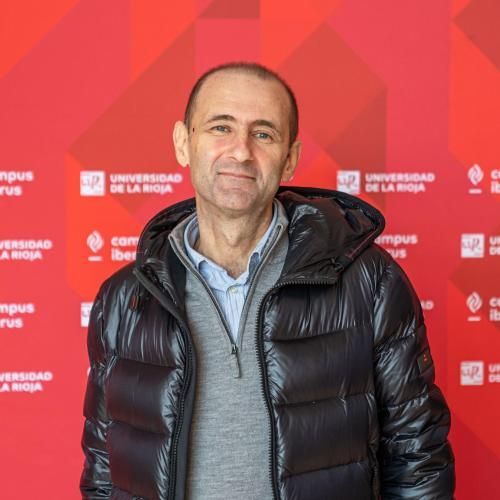
Miguel Ángel
Fano Martínez
PROFESOR TITULAR DE UNIVERSIDAD
Department: Ciencias Humanas
Area: Prehistory
Research group: Erosión, Usos del Suelo y Ordenación del Territorio
Email: miguel-angel.fano@unirioja.es
Doctor by the Universidad de Salamanca with the thesis El hábitat mesolítico en el cantábrico occidental (transformaciones ambientales y medio físico durante el holoceno antiguo) 1997. Supervised by Dr. María Soledad Corchón Rodríguez.
Associate Professor of Prehistory, University of La Rioja, Logroño, Spain (www.unirioja.es). I have worked as a lecturer and researcher at several Spanish and foreign centres, such as the Universities of Salamanca, Cantabria, UNED-Cantabria, Bordeaux 1, Deusto, and University College London (UCL). In 2011 I began working in the Human Sciences Department at the University of La Rioja. I have taken part in a number of Spanish research projects and my own research has concentrated on the study of Late Palaeolithic and Mesolithic societies in the north of the Iberian Peninsula. Most recently, I have edited a special issue on the Palaeolithic and Mesolithic in this region (JAS: Reports, 2021). My research has also attempted to elucidate the end of the so-called ‘Asturian culture’ and the start of the Neolithic. My doctoral thesis opened a line of research on the dwelling places of Asturian groups and, implicitly, the significance of the shell-middens preserved inside caves on the northern Iberian coast (BAR International Series 732, 1998). Later fieldwork achieved a more precise comprehension of some aspects of those deposits, such as their composition and chronological framework (Anejo 8, KOBIE, 2004). Finds of human remains enabled δ13C and δ15N stable isotope analysis as a way to know the diet of those Mesolithic populations (Mémoire XXXVI de la SPF, 2005). More recently, the combination of geophysical surveying and excavation succeeded in identifying, for the first time, an open-air activity area near a cave containing a shell-midden (Antiquity 89, 2015; Séances de la SPF 6, 2016). In addition, the use of Bayesian statistics has enabled an up-dated view, from the chronological perspective, of the Mesolithic-Neolithic transition in the region (Quat. Int. 364, 2015; J. World Prehistory 29, 2016). Finally, my research on this period has included aspects of the historiography of the Mesolithic (Quartär 53-54, 2006) and a recent paper has reviewed new developments in Mesolithic research in the region during the last two decades (Quat. Int. 515, 2019). My research on the Upper-Final Palaeolithic has focused on the excavation and study of the Magdalenian deposit in El Horno Cave (Cantabria), including studies on the lithic and bone utensils, portable art and personal adornments, as well as economic activities, among other facets (Mémoire XXXIX de la SPF, 2005; Paléo 17, 2005; JAS: Reports, 2020; chapter in Cambridge Scholars Publishing volume, 2020). The study of some artefacts was able to address particular issues, such as the use of harpoons (TP 70, 2013). The nature of the Magdalenian occupations at El Horno was also defined by studying the characteristics of its emplacement and the surroundings of the site and integrating this spatial information with data from the archaeological study of the deposit (Quat. Int. 412, 2016). I am currently the principal investigator (PI) of a research project on the transition to the Neolithic on the Cantabrian coast, funded by the Ministry of Science and Innovation (Government of Spain): “Hunters in Transition: The end of the Mesolithic in North Iberia (HunTran)”. The aim is to achieve qualitative progress in understanding the beginning of the Neolithic on the Cantabrian coast and surrounding areas. This goal requires generating information that allows us to evaluate potential replacement of populations; possible changes in the mobility and diet of the groups; the probable adjustment of the strategies followed for the economic exploitation of the coastal areas; and the type of activities carried out in the settlements corresponding to the transitional period, among other aspects.







